Top 7 Goa Forts
Goa is best known for its beaches. There are more than 35 beaches in this small Indian state. But did you know that Goa also has 13 forts, all with a rich history and interesting architecture? These forts were erected at various times in strategic places up in the hills or in the river openings to guard against progressing enemy either from the land or sea. Most of the Goa forts were erected by the Maratha or Mughal rulers. However, they have changed hands many times, going from British to Portuguese, and eventually into Indian hands after Goa’s freedom.
You will find all types of forts in Goa. The Dil Chahta Hai fort, which is actually the Chapora Fort in north Goa, is probably the most famous. The Agoda Fort has Asia’s oldest lighthouse. It sits at the confluence of the Mandovi River and the Arabian Sea. Fort Tiracol has been converted into a heritage hotel. It is the best-preserved fort in the state. The least famous of the 13 forts are a little more than ruins now.
| Fort Name | Made By | Location | What To See |
|---|---|---|---|
|
Aguada Fort |
17th century Portuguese fort |
North Goa |
Lighthouse, moat, cannons, scenic views |
|
Chapora Fort |
Established by Hindu kings between 1627 and 1656 |
North Goa |
Walls, gate, St. Anthony church, Dil Chahta Hai point, Chapora trail. |
|
Tiracol Fort |
17th century fort established by Hindu kings. |
Extreme North Goa |
Church of St. Anthony, ramp, platform, memorial to freedom fighters, Terekhol River |
|
Cabo de Rama Fort |
Local Soonda rulers. |
South Goa |
Bridge, bastions, cannons, St Antonio Church, statue of the Virgin Mary, watch tower, moat. |
|
Reis Magos Fort |
16th century Portuguese fort. |
South Goa |
Spring, church, scenic views of the Mandovi River. |
|
Corjuem Fort |
Built by Hindu rulers in 1705. |
Inland fort on an island in North Goa |
Ramparts, views of the Mapusa River. |
|
Mormugao Fort |
Built by the Portuguese in 1624. |
South Goa, central location |
Walls, church, guns, gate with inscriptions, scenic views. |
Aguada Fort
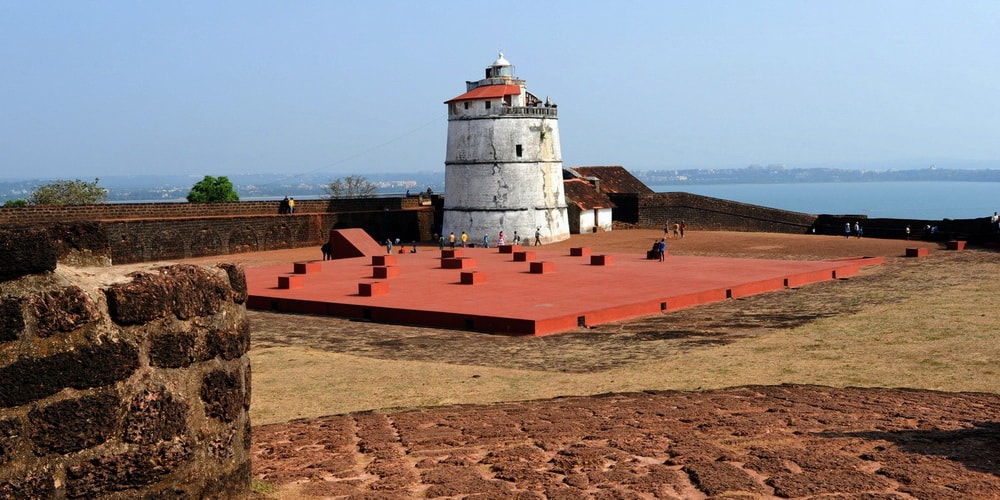
A 17th century Portuguese fort in north Goa. One of the largest forts in west India, it is on top of a small hill at the confluence of the Mandovi River and the Arabian Sea. Fort Aguada was constructed to control the movement of ships and prevent Dutch and Maratha attacks. It has seen many battles, first by the Dutch in 1604, and then the British. The fort had 79 cannons, ammunition rooms, a military barrack, deep moat, and the first lighthouse in Asia that was constructed in 1864. There was a jail later here.
- Location – In north Goa, 16.9 kilometers from Panaji and 5.2 kilometers from the Candolim beach
- What to See – The upper and lower fort, old and new lighthouse, deep moat, site of the old cannons, panoramic view of the sea and the Mandovi River.
Chapora Fort
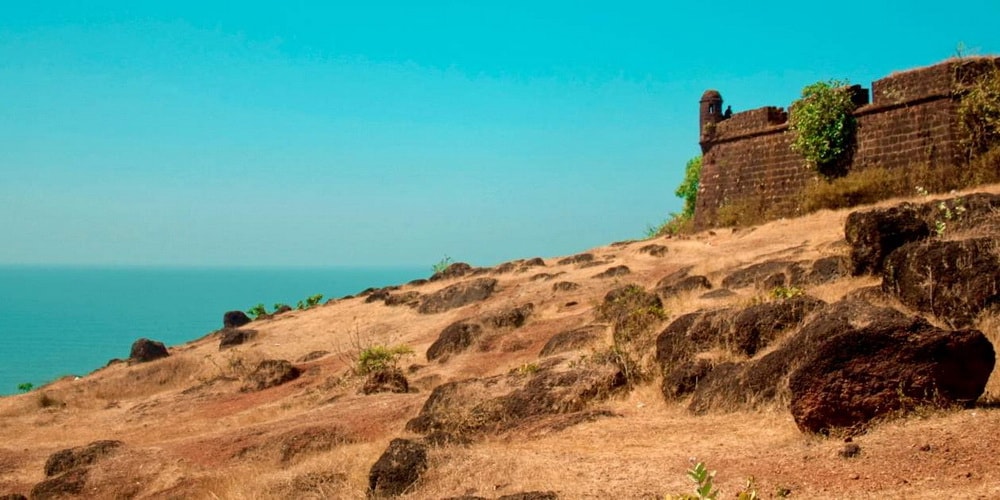
In north Goa, 21.7 kilometers from Panaji, above the Vagator beach. Chapora River meets the Arabian Sea on the other side of the fort. It was established by ruler of the Bijapur dynasty between 1627 and 1656 on the site of an ancient fort. It fell to the Portuguese, who converted it into a border outpost for preventing enemy attacks. Heavily fortified fort in its heydays. Presently the Chapora Fort is in ruins. It is popular with Indian tourists as the ‘Dil Chahta Hai’ movie was shot here.
- Location – In north Goa, 21.7 kilometers from Panaji. Next to the Vagator beach.
- What to See – Military barracks, which are vaguely visible, rampart, outer walls, church of St. Anthony, gate, the Chapora fort trail, views of the Arabian Sea.
Tiracol Fort
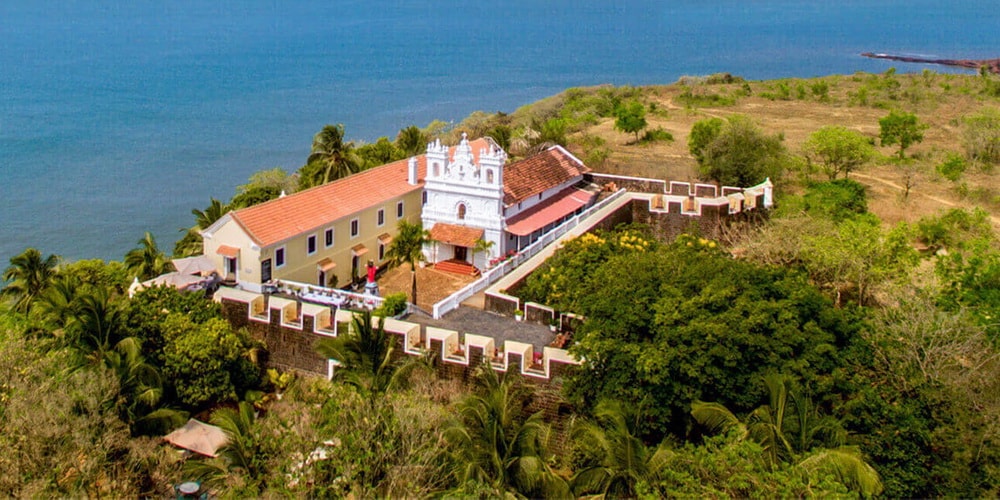
Tiracol or Terekhol fort is the northernmost point of Goa. This 17th-centurt fort was constructed by Maratha kings, but later went to British and then Portuguese control. While under Portuguese rule, the Indian freedom fighters hoisted the national flag here in 1954, but it was eventually taken down. Goa finally became a part of India in 1961. Fort Tiracol sits at the confluence of the Terekhol River at the border of Goa and Maharashtra. It is the smallest and the best-preserved Goa fort because it has been converted to a heritage 3-star hotel.
- Location – In extreme north Goa, at the state’s border with Maharashtra. 57.3 kilometers from Panaji.
- What to See – Central courtyard with Church of St. Anthony, memorial of freedom fighters, ramp, platform, views of the sea and Terekhol River.
Cabo de Rama Fort
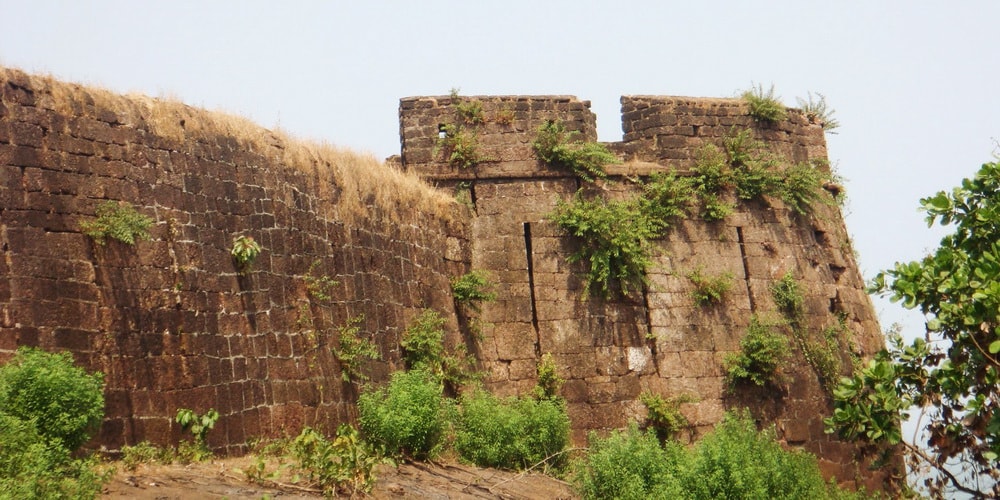
This fort in south Goa was erected by the local Soonda rulers. Cabo de Rama Fort is 29.3 kilometers from Margao and close to Agonda and Cavelossim, two popular beaches in the south. The Portuguese renovated it because of its attractive location, but Cabo de Rama fell to the British soon after. The British however abandoned the fort after only a few years. It was later turned into a prison later. According to mythology, Lord Rama stayed here with his wife Sita while in exile.
- Location – In south Goa, 29.3 kilometers from Margao, close to the Agonda and Cavelossim beaches.
- What to See – Bridge close to the entrance, bastions, cannons, St Antonio Church, statue of the Virgin Mary, watch tower, moat.
Reis Magos Fort
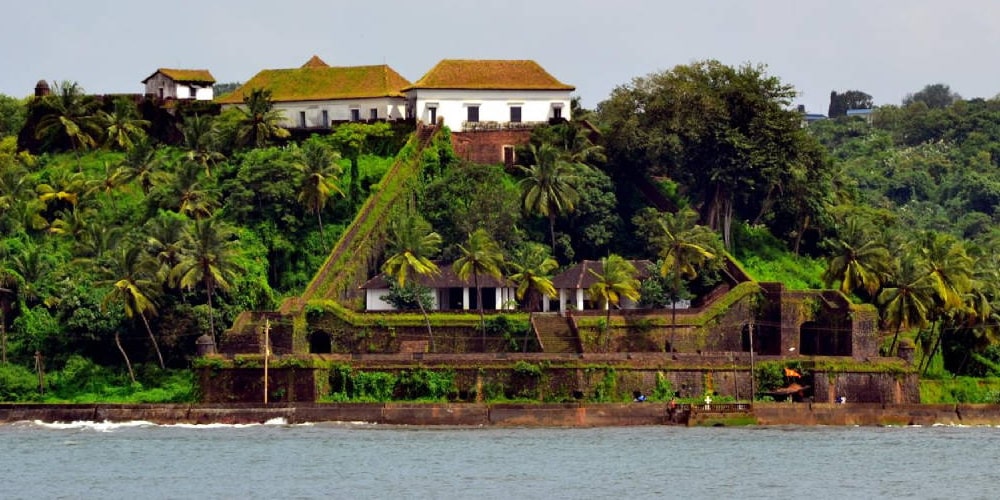
It is located on the northern banks of the Mandovi River with Panaji on the other side. Built by the Portuguese in the 16th century, Reis Magos is one of the oldest forts in Goa. It was constructed to protect the narrowest point of the Mandovi estuary. It later became the residence of Goa’s viceroy because of its riverside beautiful location. Reis Magos is now a heritage and cultural center of Goa. It has been renovated.
- Location – In south Goa on the banks of the Mandovi River, 9.3 kilometers from Panaji.
- What to See – A spring and church at the base of the fort, scenic views of the Mandovi River and Panaji on the other side.
Corjuem Fort
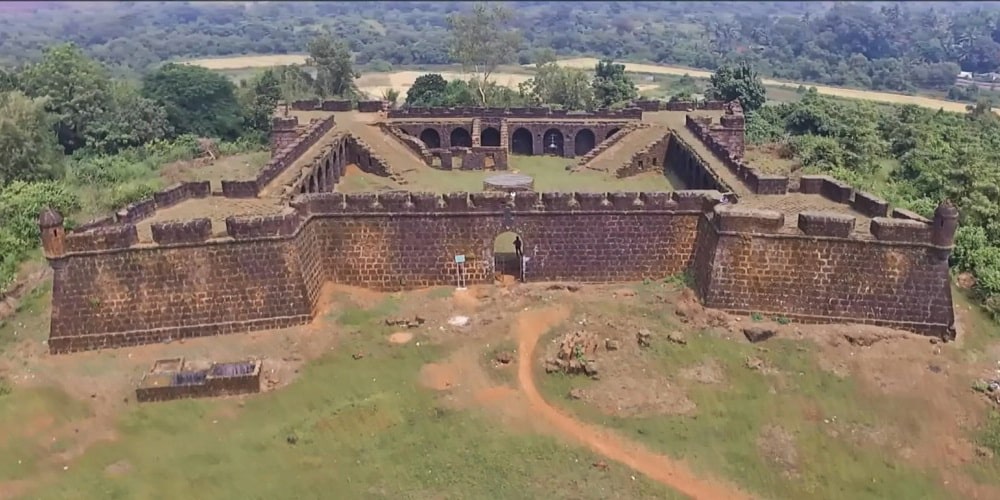
A fort built by Hindu rulers in 1705 in north Goa. But like the others, this too was occupied by the Portuguese later. Corjuem is 21.4 kilometers from Panaji on the island of Corjuem, which gives the fort its name. It is small in size, but is one of the two main inland forts in the state. The fort was later used as a military school.
- Location – In north Goa on the island of Corjuem, 21.4 kilometers from Panaji.
- What to See – Ancient ramparts, good views of Goan villages and the Mapusa River.
Mormugao Fort
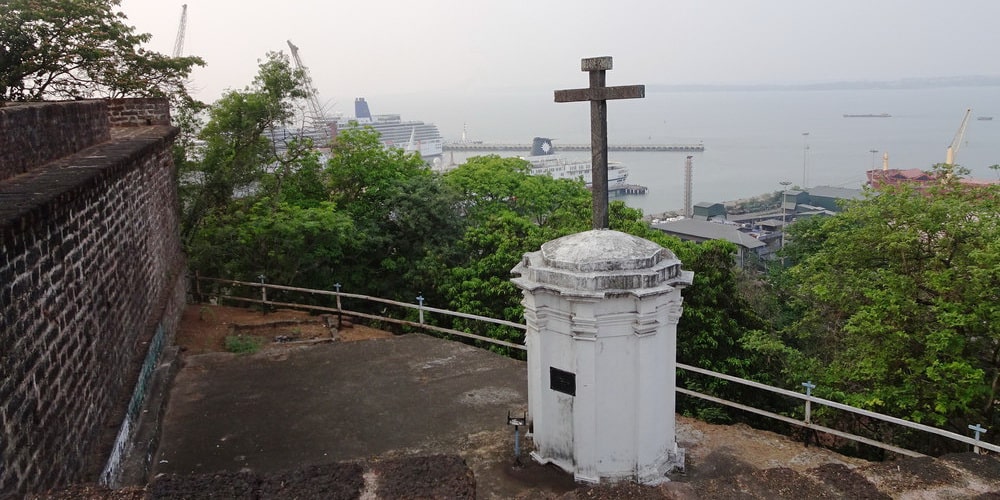
In south Goa, close to the confluence of the Zuari River and the Arabian Sea. This is one of the best preserved forts in Goa. It overlooks the Mormugao port. The Portuguese constructed this fort to control the movement of ships at the harbor. There used to be 20 bulwarks, 3 magazines, 5 jails, and a residence for guards.
- Location – In south Goa close to the tip of the Zuari River, 9.6 kilometers from Vasco da Gama.
- What to See – Walls, church, guns, gate with inscriptions, scenic views.
There are a few other forts as well you can visit like the Sinquerim Fort, Ponda Fort, Betul Fort, St. Estêvão, Rachol, Colvale Fort, and Nanuz Fort.
Rate this article:
Rated 2.78 / 5 based on 9 reviews.

